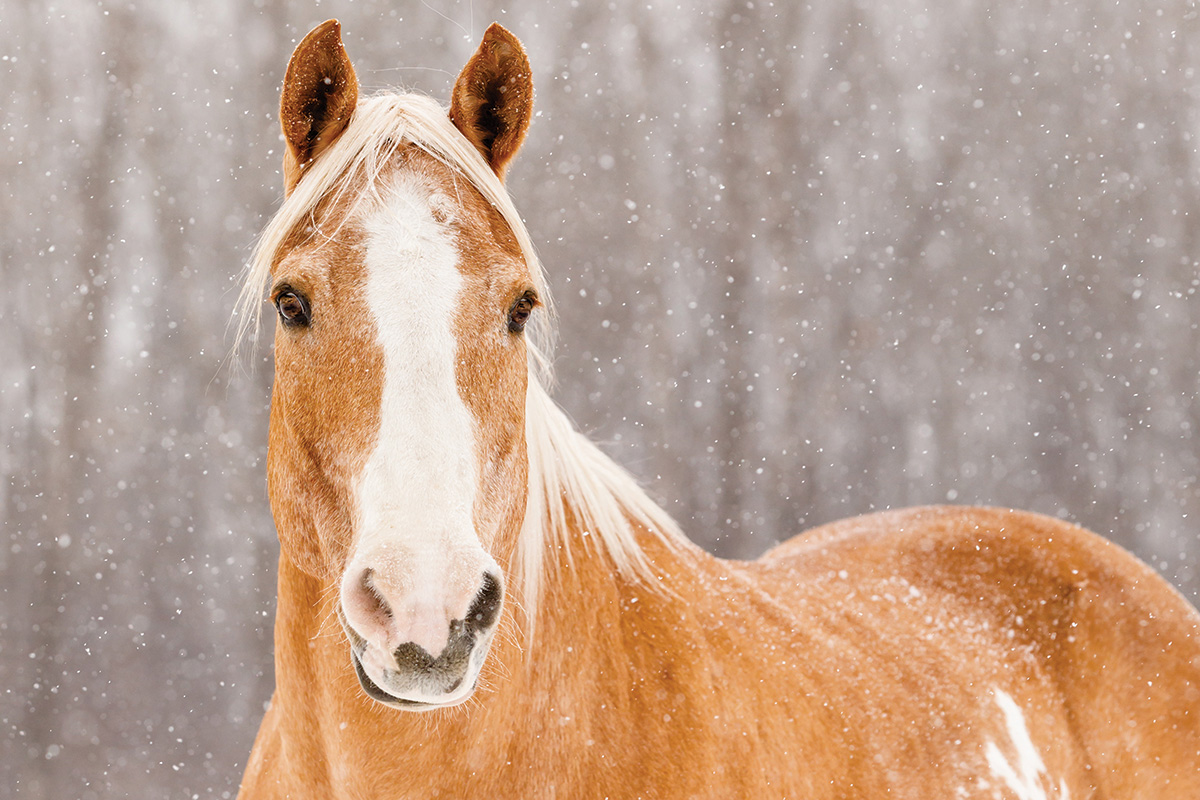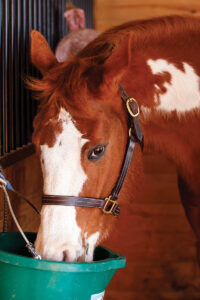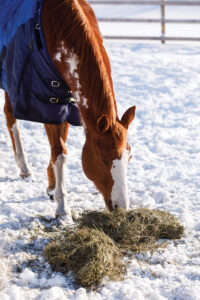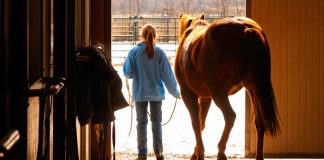
It’s finally getting cold outside and you’re bundled up, possibly with a hot cup of cocoa or coffee in hand. But how does your horse handle the chill of winter? Let’s take a look at some answers to commonly asked questions about cold weather horse care.
Also read – Senior Horse Care in Winter
1. How do horses cope with cold?
An adult horse’s “comfort zone” is lower than most people think. An acclimated healthy adult horse can remain reasonably comfortable in temperatures that dip into the 20s (Fahrenheit) and below, as long as the horse stays dry and can escape wind.
Certain physiological factors help: The most obvious is a horse’s ability to grow a thick winter coat. This natural coat works to preserve warmth by trapping warm air tightly against the horse’s body, creating a layer of insulation that is remarkably efficient at buffering cold external temperatures.
Another factor in fighting the chill is the horse’s unique digestive system. The microbial fermentation of fibrous feeds taking place in a horse’s colon creates enough internal heat that your horse’s gut acts as a type of furnace to keep him warm.
2. Do blankets flatten hair and make a horse colder?
Although a horse’s natural winter coat is meant to trap warm air against his skin, placing a blanket on top of this hair does not negate the warmth. Instead, a blanket acts as an added physical layer of insulation.
While blankets do indeed physically flatten a horse’s hair, their layers take the place of the horse’s natural coat. Air trapped between a horse and the layers of blanket now act as insulation.
If you want to feel for yourself how this insulation works, pay a visit to your horse in the pasture one winter day and place your bare hand between his shoulder and the blanket to get a sense of the heat trapped in there.
There are, however, other aspects to consider when choosing to blanket your horse. Blankets are necessary for horses that are thin, sick, or older; these animals typically struggle to maintain a core body temperature in the face of harsh environmental elements. Horses that have been clipped in the winter will need some level of blanketing, as well. All other adult horses may or may not need a blanket; the blanketing debate rages on, because it depends heavily on the individual horse and his immediate external environment.
If you’re questioning whether to blanket your horse in the winter, consider his physical characteristics (e.g., body condition score, overall health status, acclimation to his environment, age, and clipping status), the winter weather you’re expecting, and whether the horse will have access to shelter in the field for protection against wind and precipitation.
3. Is it dangerous to ride a horse in cold weather?
Just as you wouldn’t run a 5K in winter dressed as if it were July, winter riding requires specific preparations, but that doesn’t mean you can’t or shouldn’t enjoy hacking through the snow. One of the trickiest aspects of winter riding is preventing post-ride chills in a sweaty horse.

If you know you’ll be riding regularly throughout the winter, consider clipping your horse. With several partial clips to choose from, you can tailor your horse’s “nakedness” to your anticipated level of exertion.
The benefits of clipping are two-fold: A clipped horse doesn’t sweat as much, plus he will dry much faster after a workout than a horse with a full winter coat. However, with the convenience of clipping comes the responsibility of blanketing. Removing a horse’s natural cold-weather barrier means he will need a blanket to help keep the chill away.
To shoe or not and how are other considerations for winter riding. Regular horseshoes have poor traction on ice and snow. For this reason, some people elect to pull their horses’ shoes in the winter.
However, if you think you might ride a reasonable amount in snow or icy conditions, consider talking to your farrier about studs for traction or snow pads to prevent the buildup of ice balls under your horse’s shoes. Walking on uneven packed ice also tends to bruise a horse’s soles, which is another reason some riders elect to use snow pads.
4. Can a horse get enough water by eating ice and snow?

Most domestic horses, unless already acclimated to a severe winter environment where water is scarce, have lost their natural ability (or inclination) to consume adequate amounts of ice or snow in amounts large enough to satisfy their daily water requirements. Leaving a horse to consume only ice or snow places him in a constant state of dehydration, thereby putting him at risk of impaction colic.
Frozen water alone isn’t the only problem in winter. Horses can be picky drinkers, and many will turn their noses up at water that is deemed too cold. Studies have shown horses prefer water between 45 and 65 degrees Fahrenheit to drink. Heated water buckets and troughs are the easiest solution for winter water woes.
Decreased water intake not only increases a horse’s chance of impaction colic, but also impacts his feed intake—when a horse drinks less, he also eats less. This then further affects his ability to keep warm.
While bran mashes and other methods of adding a bit of liquid to a horse’s meal may seem like a good alternative to increase your horse’s water intake in the winter, these methods typically don’t provide enough moisture. A horse’s average water intake can vary widely due to many factors, but on average, an adult horse will drink between 5 and 10 gallons of water a day. When grazing, a lot of this water is consumed within grass.
In winter, however, hay does nothing to help with water intake, which is why it is vital to make sure your horse has continual access to clean, non-frozen (and preferably warmed) water in cold weather.
5. How should I change my horse’s diet in the winter?

Although grain has more caloric density per pound than hay, it’s actually roughage that helps keep your horse warm in the winter. Therefore, when temperatures plunge below freezing for extended periods, increase your horse’s hay ration.
Because blankets and thick winter coats easily hide a horse’s body condition, it’s important to regularly monitor his body weight, either through evaluating his Henneke body condition score (BCS) or by using a weight tape. Although tapes are notoriously inaccurate, they do catch significant changes up or down.
These objective measurements will tell you if he’s taking in too few (or too many) calories. Evaluating body weight monthly through the winter should give you a good idea about the adequacy of your horse’s diet.
Most horses do not require any further alterations to their diet during the winter. Mineral and vitamin needs stay the same as in the summer, although if your horse is a voracious salt consumer, he may appreciate some loose salt instead of a frozen salt block to lick.
This article about cold weather horse care appeared in the November/December 2021 issue of Horse Illustrated magazine. Click here to subscribe!





